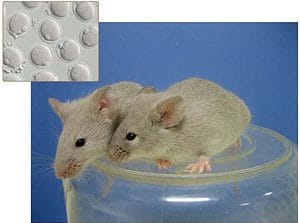
Kyoto University researchers have produced normal, healthy mouse pups after inseminating a foster mother with eggs and sperm derived from stem cells, exclusively grown in a petri dish. This remarkable accomplishment came after last year scientists produced mouse pups from stem cell grown sperm. Their research might lead to the development of novel techniques through which infertile couples may conceive.
“This is a significant achievement that I believe will have a sustained and long-lasting impact on the field of reproductive cell biology and genetics,” says Amander Clark, a stem cell biologist at University of California, Los Angeles.
The team of researchers, lead by Mitinori Saitou, first collected both embryonic stem cells (ES) and induced pluripotent stem cells (iPS). The latter are cell sampled from adult tissue, reprogrammed to act like stem cells. These were cultured in a cocktail of proteins to produce primordial germ cell-like cells, such that the researchers might obtain oocytes – pre-eggs. The primordial cells were then mixed with fetal ovarian cells, forming reconstituted ovaries that they then grafted onto natural ovaries in living mice.
The scientists found that after four weeks and three days the primordial germ cell-like cells had developed into oocytes. These were fertilized resulting in embryos which were implanted in surrogate mothers. Three weeks later the first pups were born – healthy and normal.
The Japanese researchers conclude that their “culture system serves as a robust foundation for the investigation of key properties of female germ cells, including the acquisition of totipotency, and for the reconstitution of whole female germ-cell development in vitro.”
The study, published in the journal Science, says that the findings might form the basis for a new technique which might allow for treating infertility.
“This study has provided the critical proof of principle that oocytes can be generated from induced pluripotent stem cells,”
via Wired






